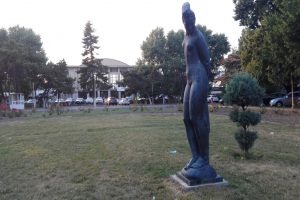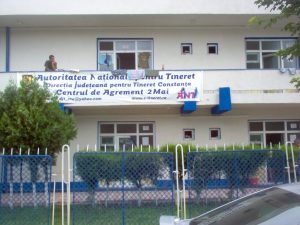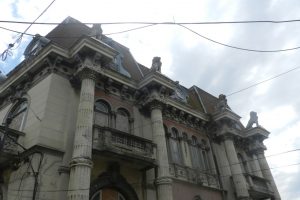

Capidava Fortress is located on the right, rocky bank of the Danube halfway between Cernavoda (ancient Axiopolis) and Harsova (ancient Carsium). The fort was built during Emperor Trajan within the measures to strengthen the Roman frontier; the construction is attributed to detachments of the legions XI Claudia and V of Macedonia. Within the fort were successively stationed various military units; until the IIIrd century after Christ have camped here troops brought from Germany then, ancient sources reveal a cavalry unit, or units of equites scutarii and vexillatio Capidavensium in the IV – VI century.
The Getic toponyme – Capidava meaning the frotres from the “fortress from turning” – indicates a pre-Roman habitation; and place was extremely favorable position for the purpose for which he was elected – that of surveillance of an area as spread as possible – along the Danube, upstream and downstream; across the river and in special situations (attacks on land), inward.
The fortress offers to its visitors a an imposing enclosure wall, thick over 2,5 m, with heights kept between 2 and 6 meters, composed of eleven curtain walls (spaces between the towers) and eight towers. On the north-east side, visible from the road, between corner towers, can be seen the quadrangle in the center of the walls, two intermediate horseshoe-shaped towers, kept on very low heights; the fact is due to abandonment thereof during recovery of the chamber in the second phase of the late Roman stage.
In the tower no. 1 located on the north-west is a small gate – poterna – arched opening, which was closed with a solid door locked from inside with a massive drug. Inside the tower has two massive piles supporting a floor (the same situation is in quadrangular tower on the north-east). Through this portena someone could go quickly to port located at the base of the fortress on the Danube riverbank.
In the northern corner of the city is the only edifice of Christian worship discovered so far in Capidava. The church dates from the sixth century, and through its planimetric features appears as a building directly inspired by religious architecture from Syro-Palestinian space. The church, with dimensions of 18,20 x 8,40 m, had a single nave and a semicircular apse; the center of the apse, under the pavement of the altar, was identified a small crypt, reproducing the plan of the church, and which was certainly sheltering, a box with martyr relics.
The archeological findings are of a great variety and reveal the occuptions of the residents of this city. The inscriptions informs us about the names and some of their beliefs; we become aware of surrounding farms and the activities they masters were pursuing; we learn about the assessment made by living to those disappeared – be they soldiers, sons / daughters, husbands / wives. We decipher which gods they worshiped and brought offerings. As a custom point, as a center located in a strategic point on one of the main roads of the Empire, the fortress with a vast rural territory which included not only numerous farms but also a number of hamlets (pagi) and villages (vici), Capidava has known dramatic increases and decreases throughout the ages; attacks of destruction and rebuilding; restarting the life again with joys and sorows.Everything is in the ground. Everything must be deciphered with care not to destroy more, and made known to posterity. Each shard has a story; should we see or have to listen it.



